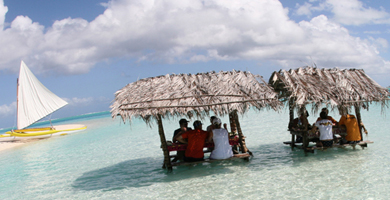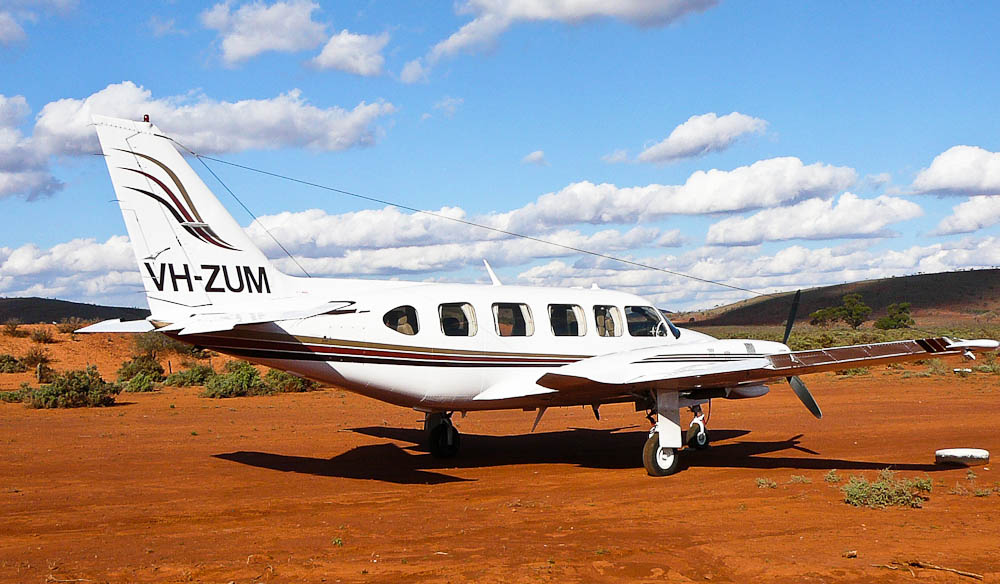SAMOA: MicroAid International Makes A Difference
MicroAid International founder and project manager Jon Ross talks to wandermelon about helping out communities, launching canoe fleets, and being made a chief in Samoa.
You’ve just returned from eight weeks in Samoa with MicroAid International—what were you doing there? I was doing disaster recovery projects related to the 2009 tsunami. MicroAid stays focused on victims of disasters after the world’s attention has moved on. In Samoa, most of the housing issues were addressed by the villages themselves, the government, and some international NGOs, but there were situations where tools of livelihood were not replaced or repaired. I spent my time in Samoa building canoes for one village and delivering fishing kits to another.
Tell us more about the mission of MicroAid and why you started it:
I started MicroAid because I realized that a lot of disaster-related aid organizations rush to a disaster area right away, but not very many, if any, stay around for the long term: getting people back into permanent housing and back to work so that they can become self-sufficient. MicroAid goes in years after the event and helps people get out of the “temporary” shelters and gives them tools so they can make a living. MicroAid is the third stage of disaster response: “recovery”; the first two are “emergency response” and “relief.” I sometimes call those people the “tent and water” people; we are the brick and mortar people.
Why Samoa?
Samoa was struck by a tsunami in September 2009. Before all the disaster related needs had been met, the Haiti earthquake happened (January 2010), and most of the world’s attention and humanitarian aid shifted over. Of course, it is important to respond to the disaster at hand, but equally important to realize that people still need help in other places.
Did you accomplish your goals?
We accomplished our goals in Samoa and then some. In the remote village of Matafa’a canoes are their primary means of getting across the bay—to go to school, to the small market, and to catch the bus to the capital to go to work. They lost most of them in the tidal wave in 2009. We started the project intending to build 10 canoes, but increased that to 16—one for every family that needed one. In the village of Salea’aumua, where their fishing kits had been destroyed or washed away, we replaced five and donated them to the women’s committee who will lend them out to the families that need them.
My goals were pretty set when I arrived in March. I had done a preliminary site assessment a year earlier and knew what needed to be done. I spent the year back in the States raising money for those projects. The one thing that was surprising was how integrated into the community I was in Matafa’a where we were building the canoes. No other aid worker had ever lived there while they were helping. But I did, and had an amazing cultural experience on top of the project’s success. The people of Matafa’a were so appreciative and genuinely welcoming, it was heartwarming.
What was it like living there in the village?
Matafa’a is one of the most remote villages in Samoa, which is already a pretty remote island in the Pacific. There is no good road to get to the village, which is on the other side of a large bay—besides, none of the villagers have cars—so the only way they get from one side of the bay to the other is by canoe. There is electricity in the village, but otherwise things are done very traditionally: cooking over fires made from coconut husks, raising taro and bananas for food, and fishing at night. Each family shares a main open house called a “fale,” where everyone sleeps together on mats on the floor. The church plays a central role in the community and most people attend services on Sunday. Regardless of one’s beliefs, there is no work done on that day—no playing, swimming, listening to music, or any other activity, really—it is a day of rest. I thought that most people in Samoa spoke English, but that is not the case—not in the villages, at least, and not in one as remote as Matafa’a. I had someone who acted as my interpreter. As far as the environment goes, it is 95 degrees and 100 percent humidity. It rains almost every day at some point, so consequently everything is always damp. We used rainwater in buckets to “shower,” and outhouses for outhouse activities.
Were the people initially receptive to you or did it take a bit for them to understand your good will?
It always takes a bit of time for people to understand that I am there to help them help themselves, and not just to make a donation. For the canoe project, I organized and funded the project, but the villagers—all of them—did the work. I stayed to make sure that things were done efficiently and completely, which is part of the MicroAid concept: I do not leave until the job is done.
Rumor has it you are now a chief?
Ah, yes, I was given a matai title; I am a chief— a “high chief,” actually. It was quite an honor, as it means that beyond my gift to them, they recognized my interest in and dedication to the village, the people, and their culture. I now have a say in all village matters, in addition to always having a place to stay and food to eat. My matai title is the same one that the current Samoan head of state holds: Tupua.
What was the ceremony like?
The matai ceremony was much more elaborate than I realized. It was an afternoon-long ceremony of speeches, gift exchange, eating, and dancing. I had multiple costume changes and had to learn lines to repeat back to other high chiefs who were making the bestowment. It was like a prom, graduation, bar mitzvah, and confirmation all in one.
What did you personally learn while you were there?
Most of the lessons I learned are subtle and on an existential level. Certainly, the Samoan concept of “aiga,” the extended family, is very powerful. They can’t imagine that anyone is homeless in a country like the U.S, since in Samoa, if you need a place to live or something to eat, your family would always provide that. I also learned that even though food is basically “free” in the villages—from the jungle or the sea—it is extremely labor intensive to collect it. The Samoans would say they have an easy life, but it is hard work from morning till late at night. On a macro level, it was wonderful to learn about the traditional Samoan culture through the experience of living in the village.
How can people get involved to help both as a volunteer and/or as a donor?
I would hope that my work would inspire others to do similar things. Maybe not travel half-way around the world and build canoes, but to know that, even at home, you can make an impact by doing small things. As Sydney Smith said, “It is the greatest of all mistakes to do nothing just because all you can only do is a little.” As for donations, we can use all the support we can get; and people can rest assured that their donations are being used directly to help those in need—efficiently and effectively. At MicroAid 100% of donations go to helping those in need, overhead is funded by me and the board of directors.
Is it true a child in the village was named after you?
Yes, a new baby was named after me. Quite the honor.
What’s next for Jon Ross and MicroAid?
The next MicroAid project site will be in the Sacred Valley in the Peruvian Andes. Hundreds of homes and entire villages have been destroyed in recent years by massive landslides and devastating floods caused by torrential rains. We are also looking at helping people in Burma (cyclone 2008) and Haiti (earthquake 2010). And we may go back to Sri Lanka, where we built houses for victims of the 2004 tsunami in 2010, as many people still need help there. As we discussed, just because a new disaster happens doesn’t mean people in other places have been taken care of.
To learn more, make a donation or get involved please go to: www.microaidinternational.org
Latest posts by Ann Wycoff
- France with the Family - October 22, 2015
- Family Adventure in SAN DIEGO - November 4, 2014
- Ruffing It: Traveling with PETS - August 5, 2014

















